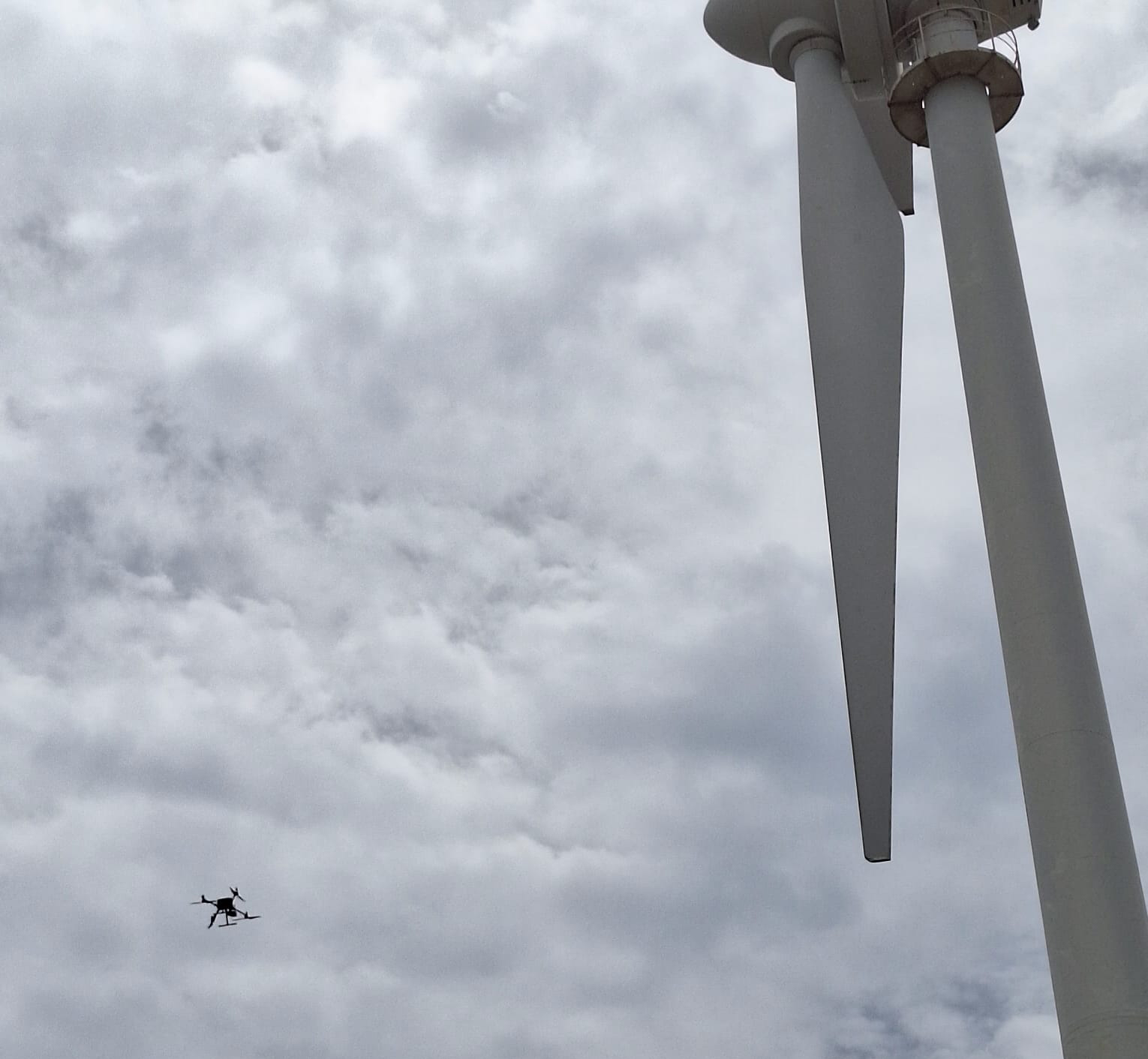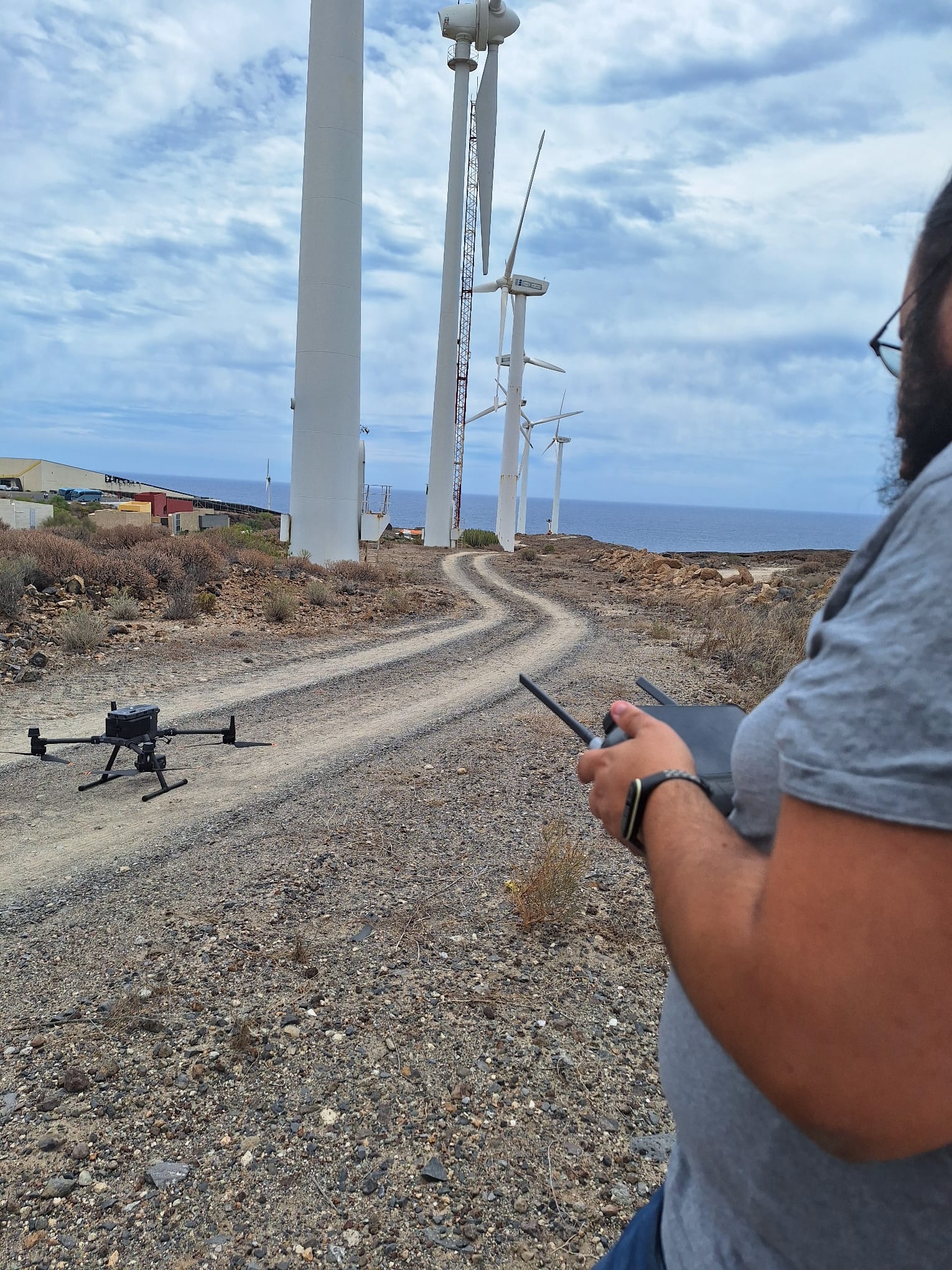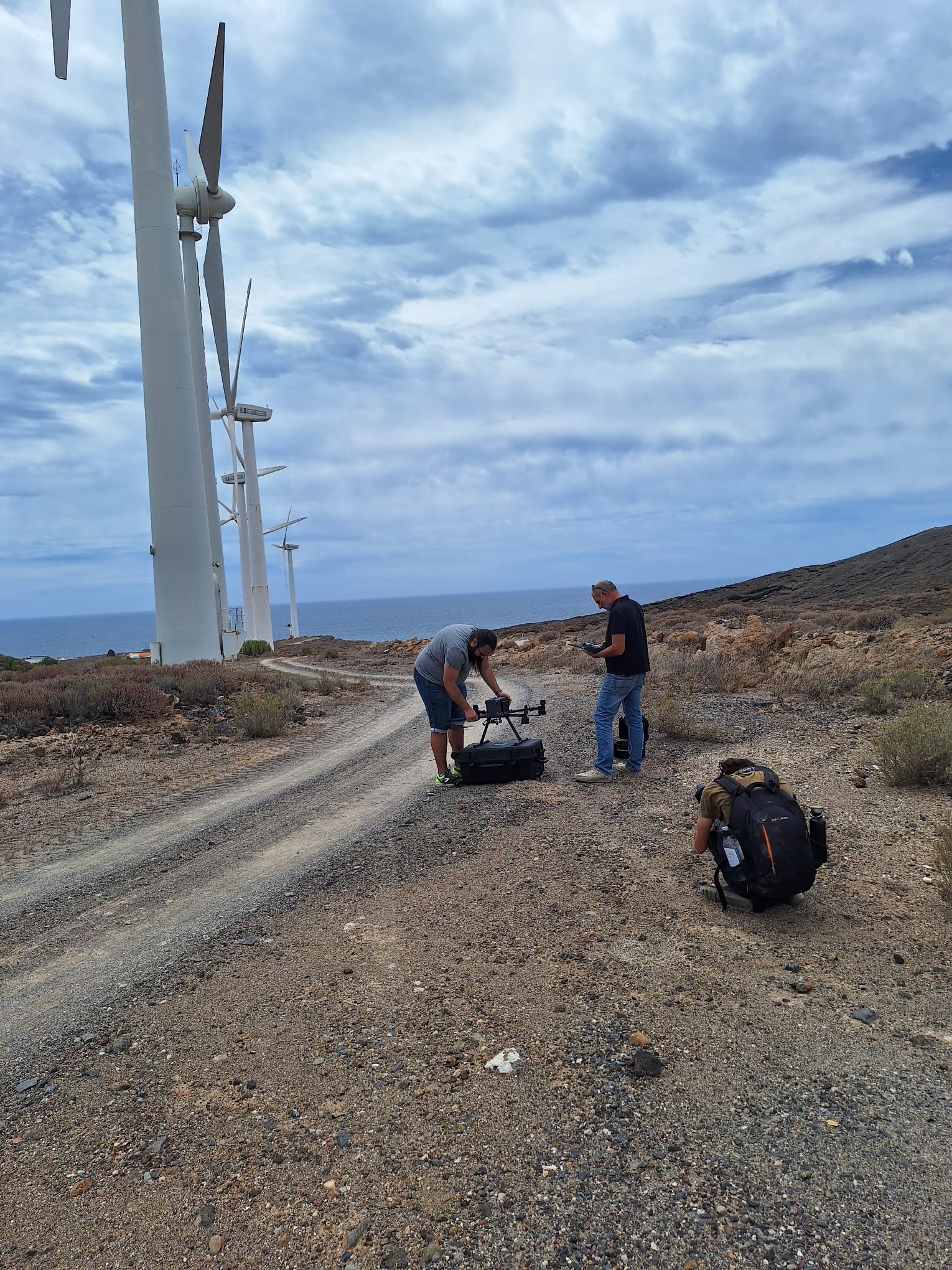Researchers from ITER´s Robotics and Automation team have begun test flights to validate the methodology for acquiring thermal images of wind turbines.
The AEROGENIA project is in its initial phase, focusing on confirming that the proposed methodology meets the environmental conditions and specifications of the wind turbine models under study. Researchers from ITER’s Robotics and Automation team have started test flights to validate the flight methodology for acquiring thermal images of wind turbines.
During the tests, a drone equipped with a high-precision thermal camera (Zenmuse H20T) was used to capture multispectral data of wind turbines. The main goal was to establish a robust methodology that allows for the precise detection of defects or anomalies in wind turbines, which are difficult to identify using conventional methods.
The activity included a precise review of technical requirements, the definition of control points to determine flight trajectory and speed, and the verification and validation of the data acquired with the tested methodology. Once the methodology is confirmed, it will ensure that the system can operate autonomously and effectively under real conditions.
The ITER team continues to work on refining the technology and conducting more tests to ensure the system’s viability and efficiency. Collaboration between engineers, technicians, and computer vision specialists is crucial for the continued success of this innovative project.
The AEROGENIA project addresses the growing importance of wind power generation in Spain and the need for efficient maintenance management of wind turbines. The project focuses on optimizing predictive maintenance of wind turbines, especially the blades, through the development of a comprehensive defect diagnosis system. Utilizing artificial intelligence techniques and a digital twin, the project will enable the anticipation of failures, autonomous drone inspections, and real-time visualization of wind turbine health, thereby contributing to maximizing the availability and efficiency of wind power generation in Spain. This project is funded by the Ministry of Science and Innovation through the State Research Agency (10.13039/501100011033) and by the European Union NextGenerationEU/PRTR.



